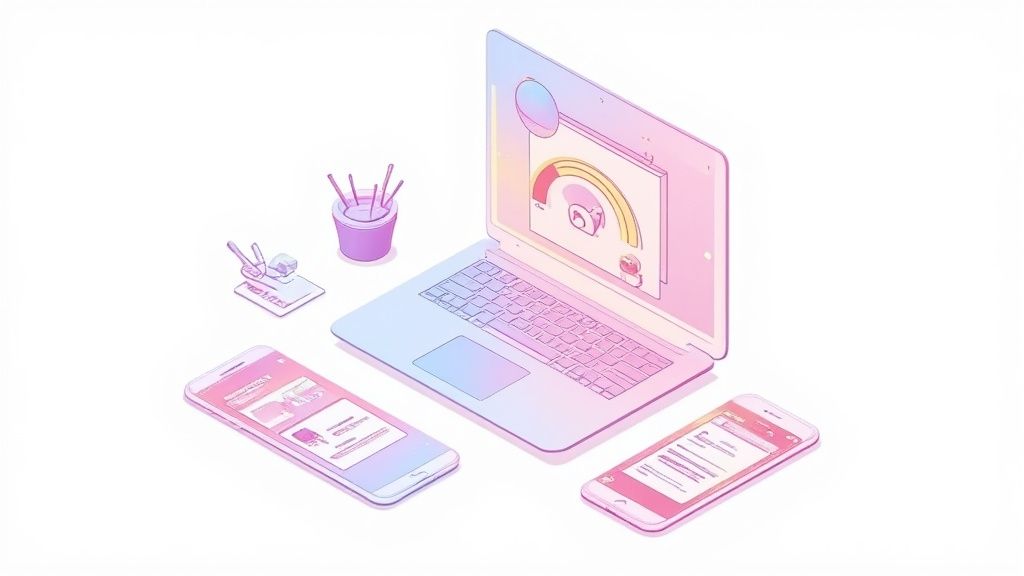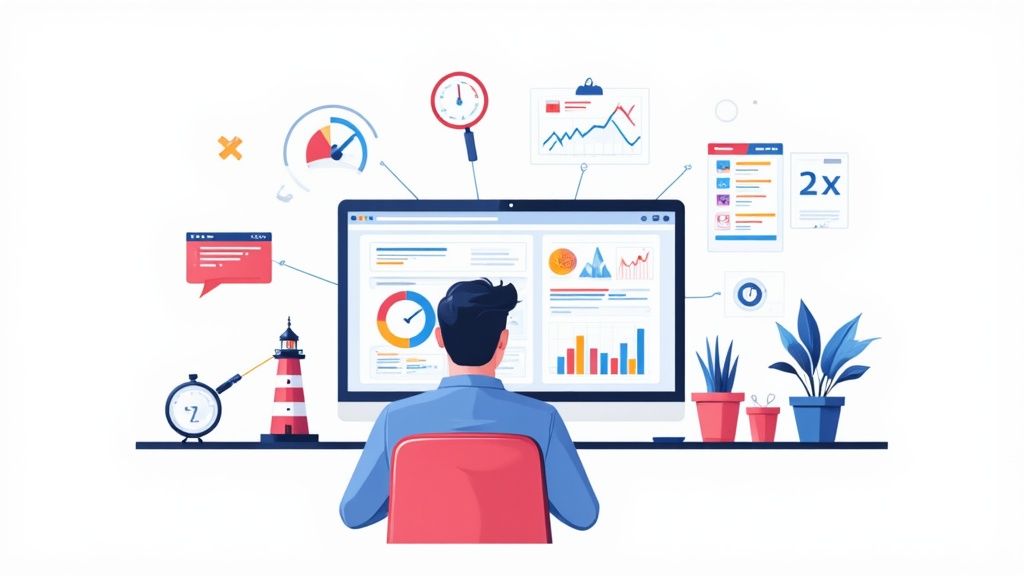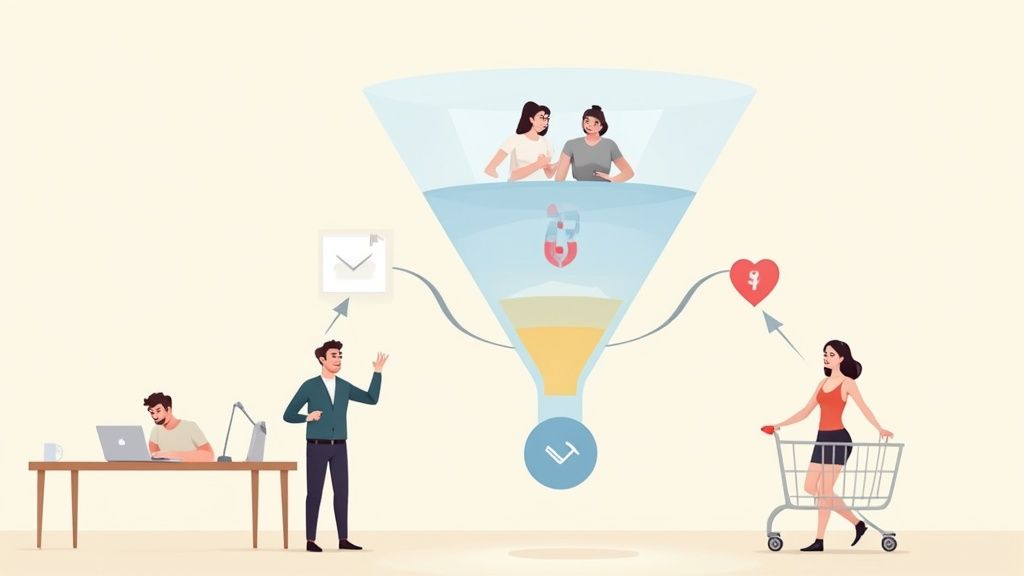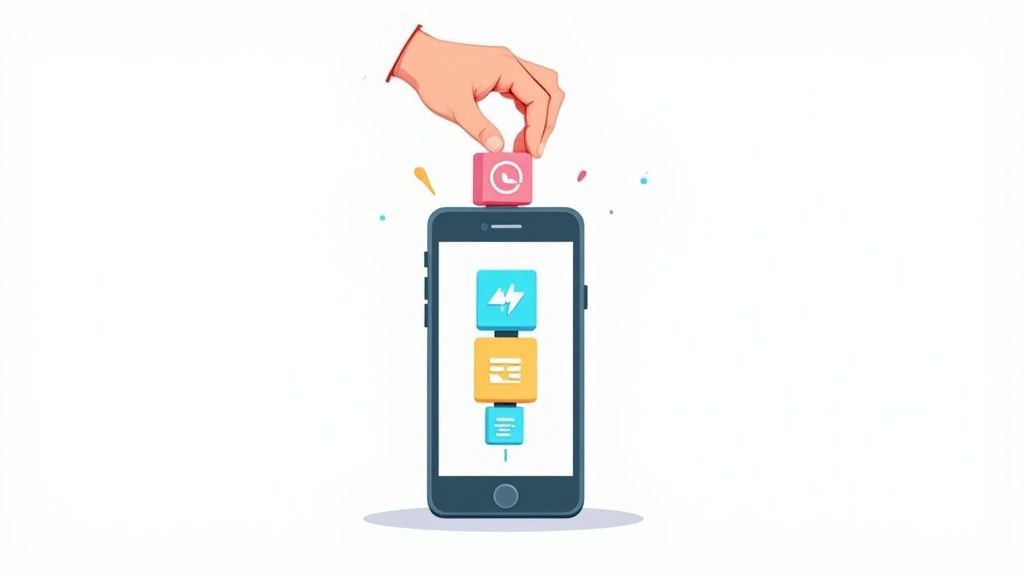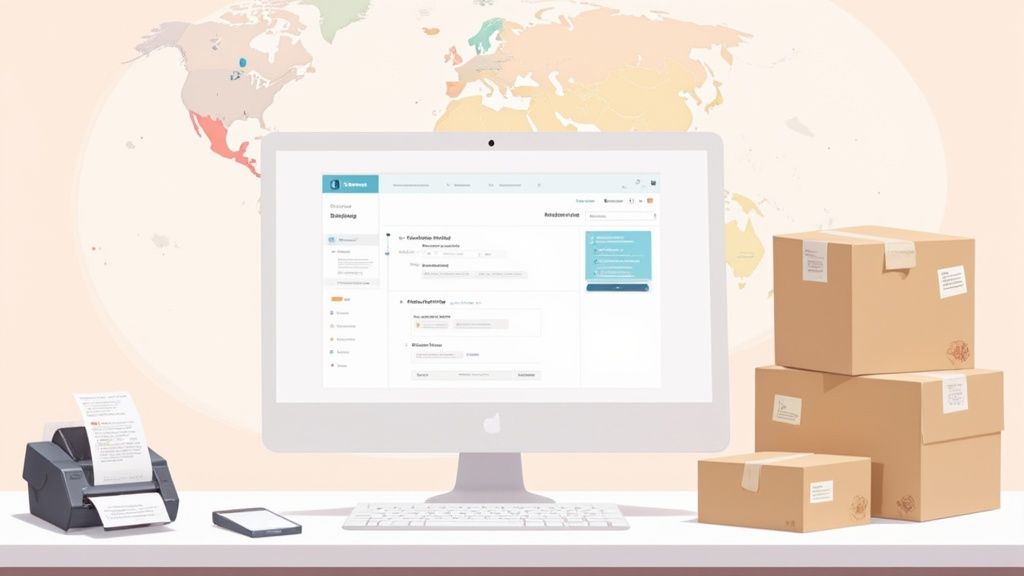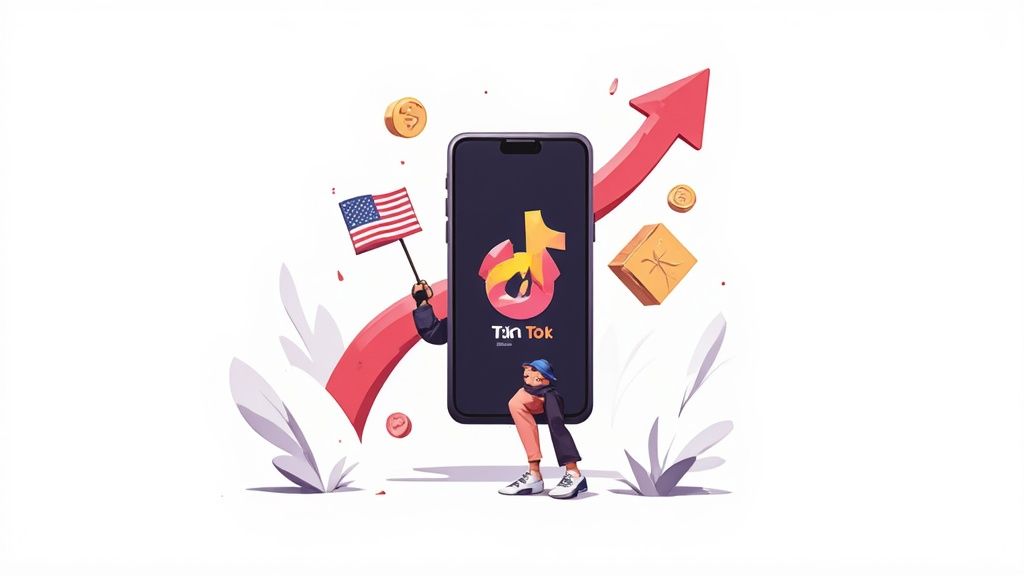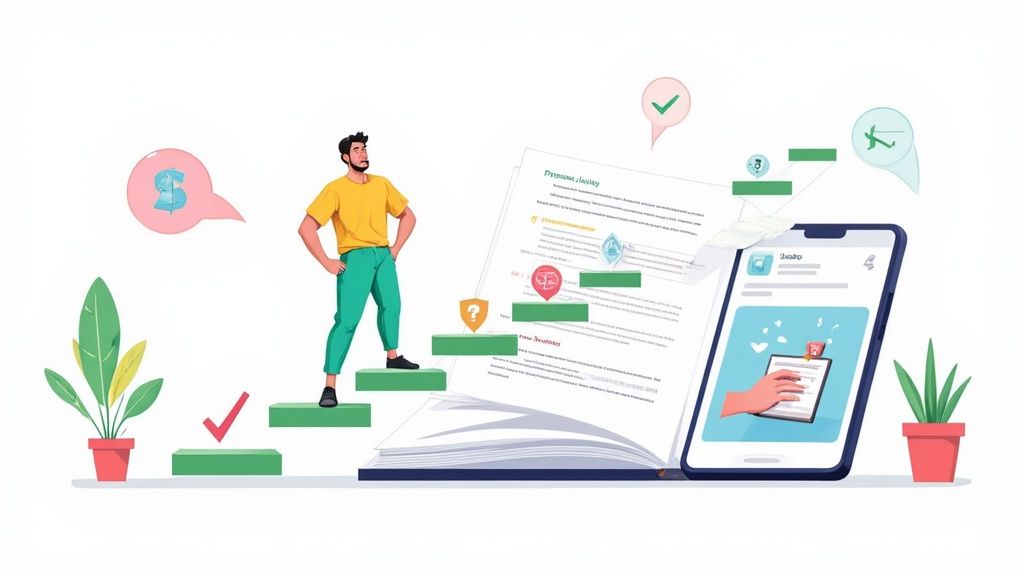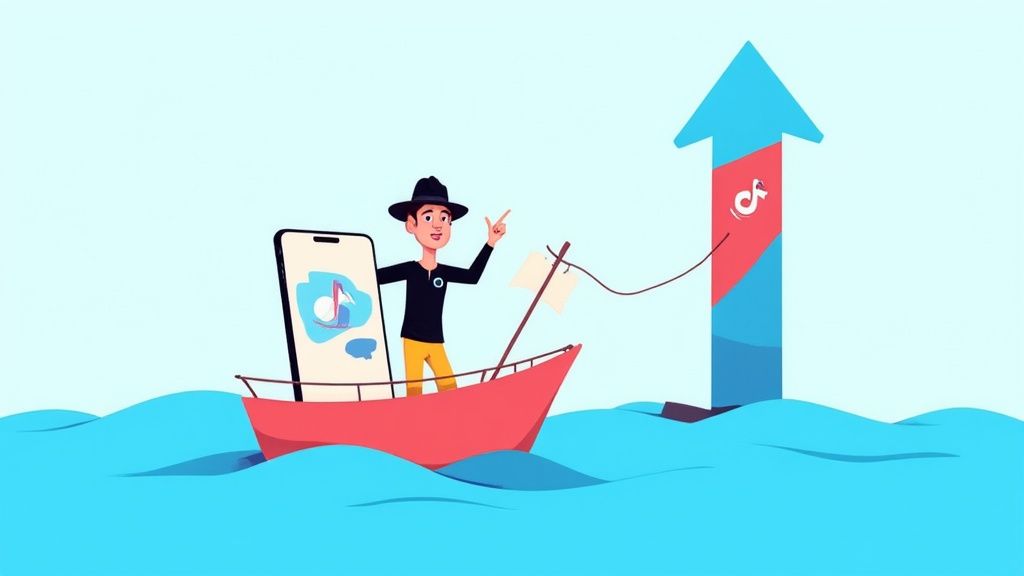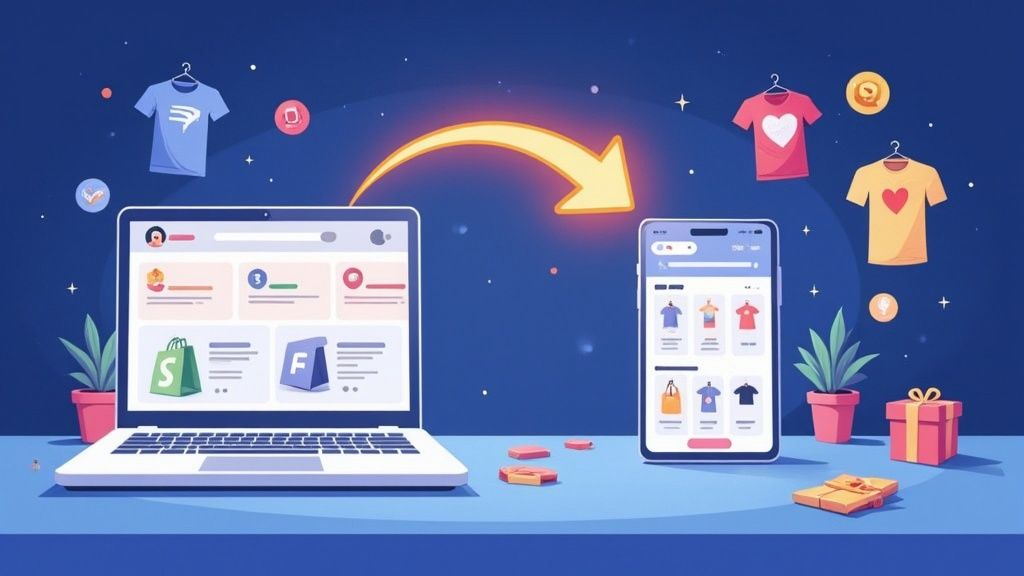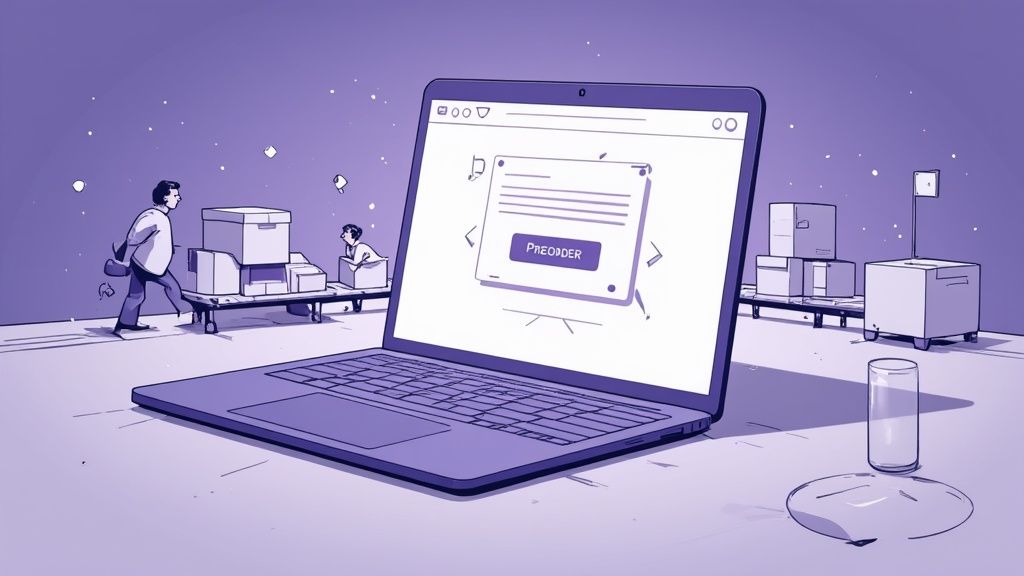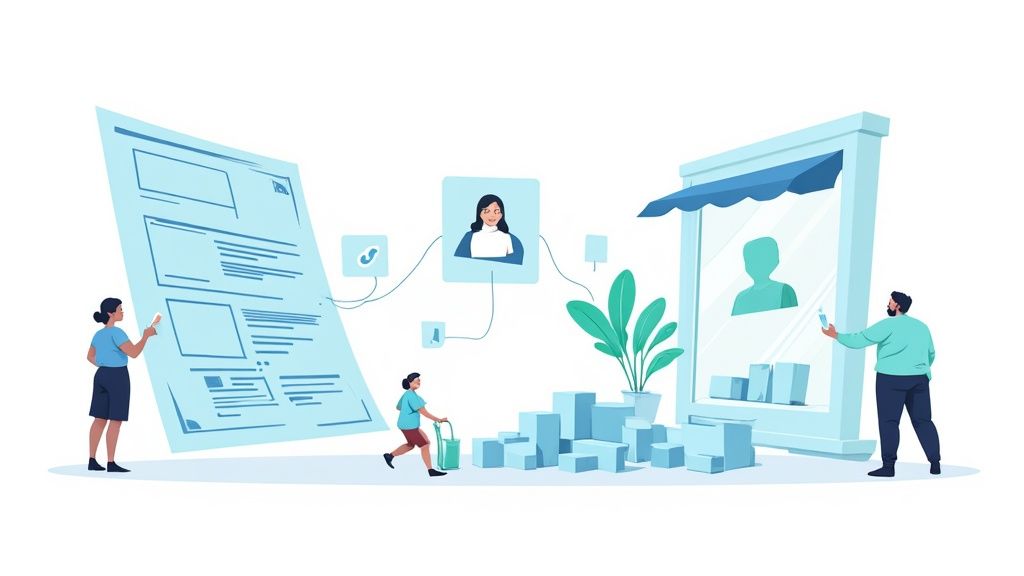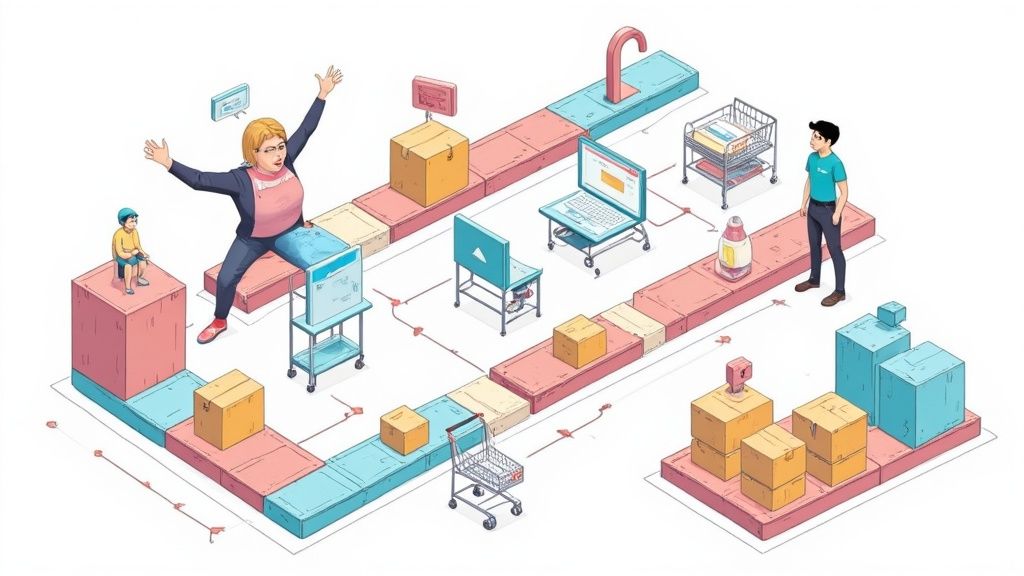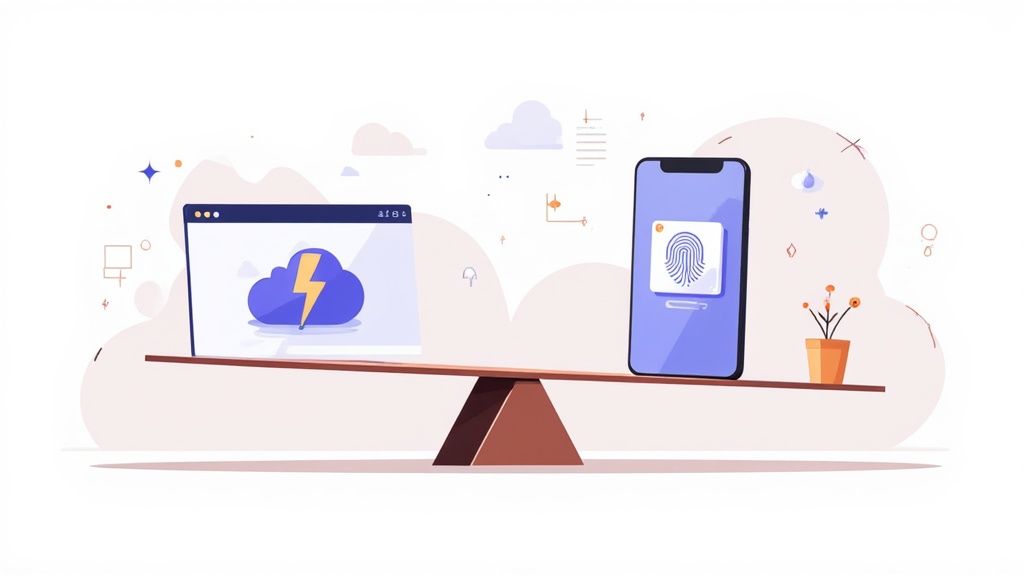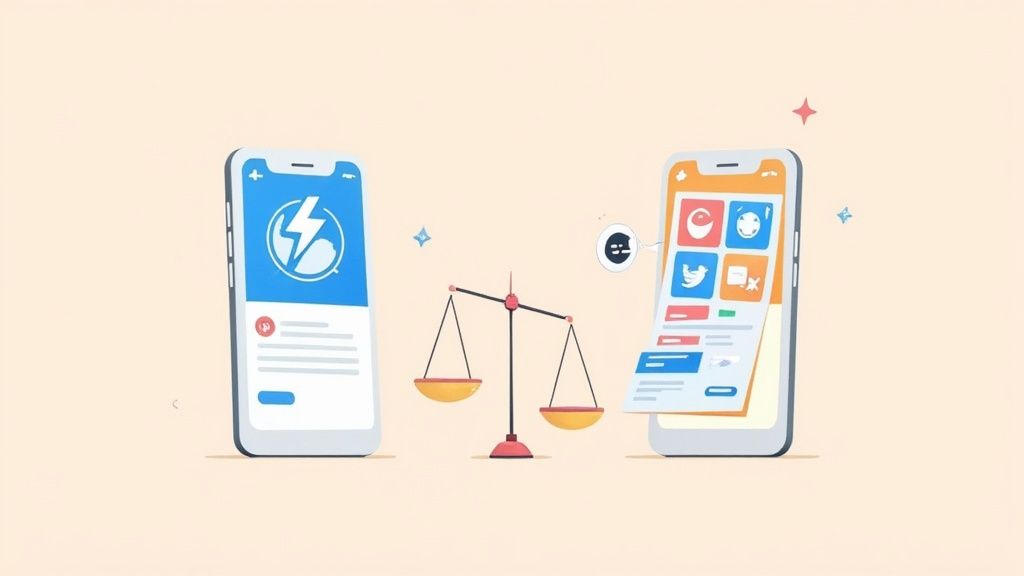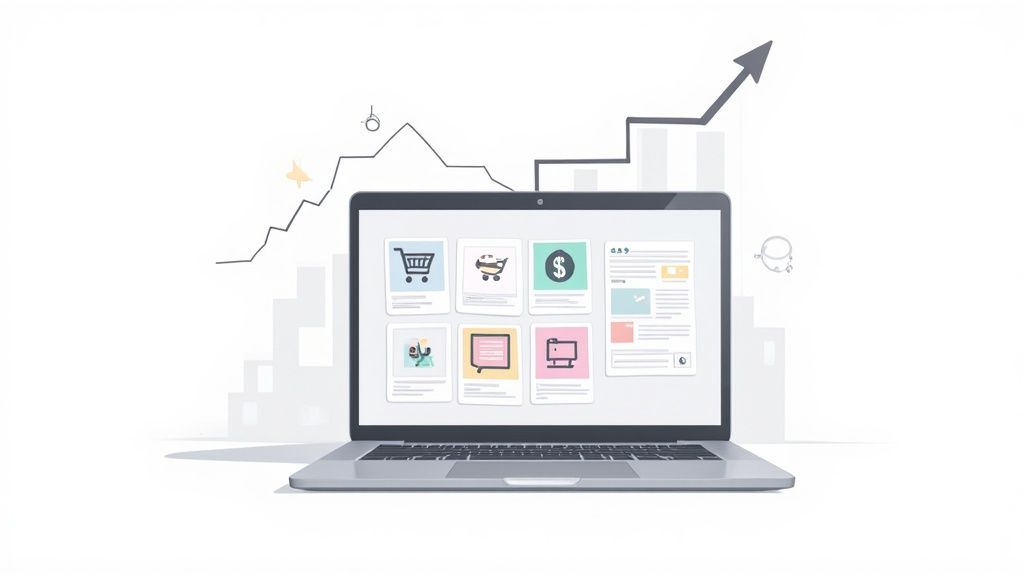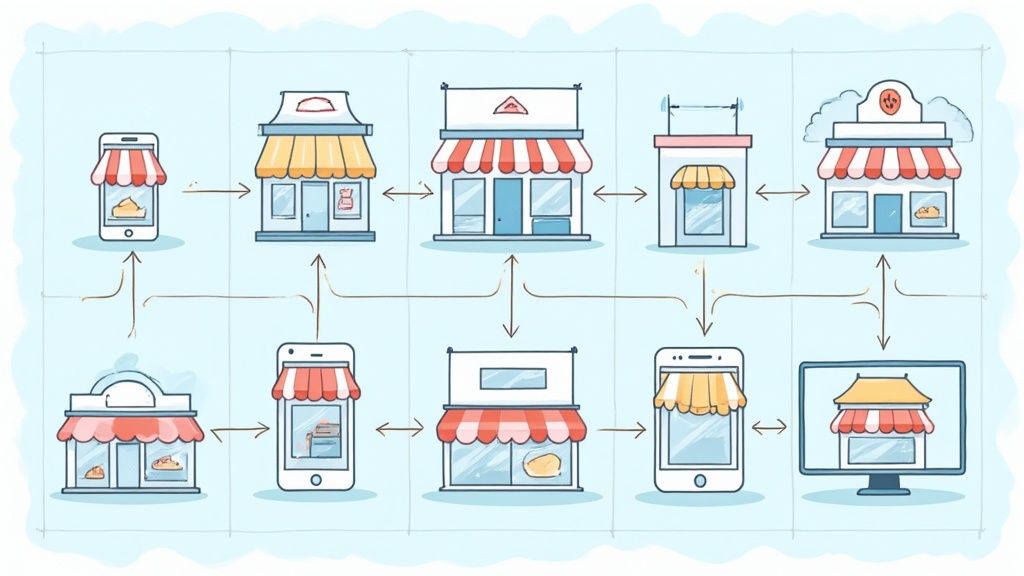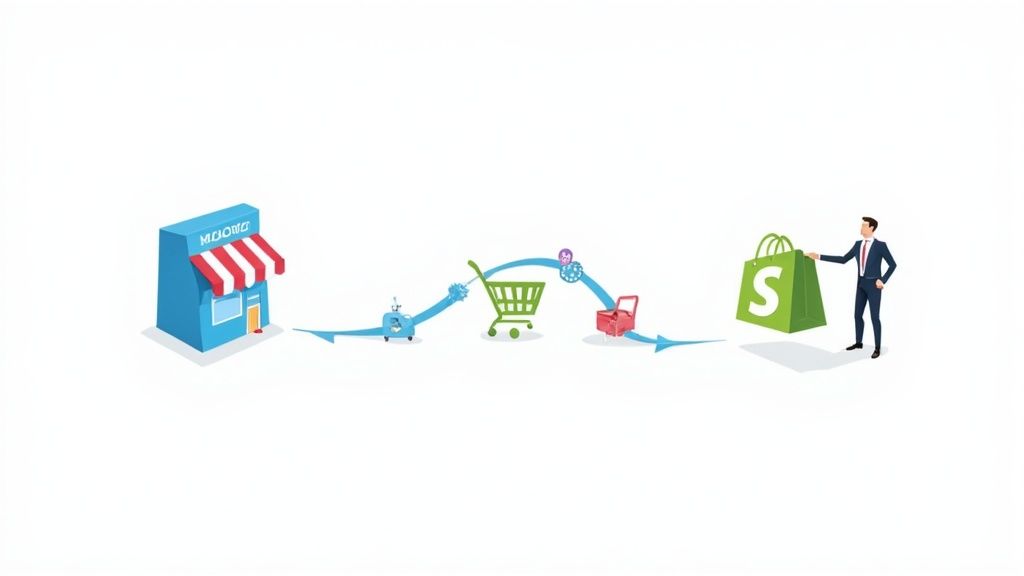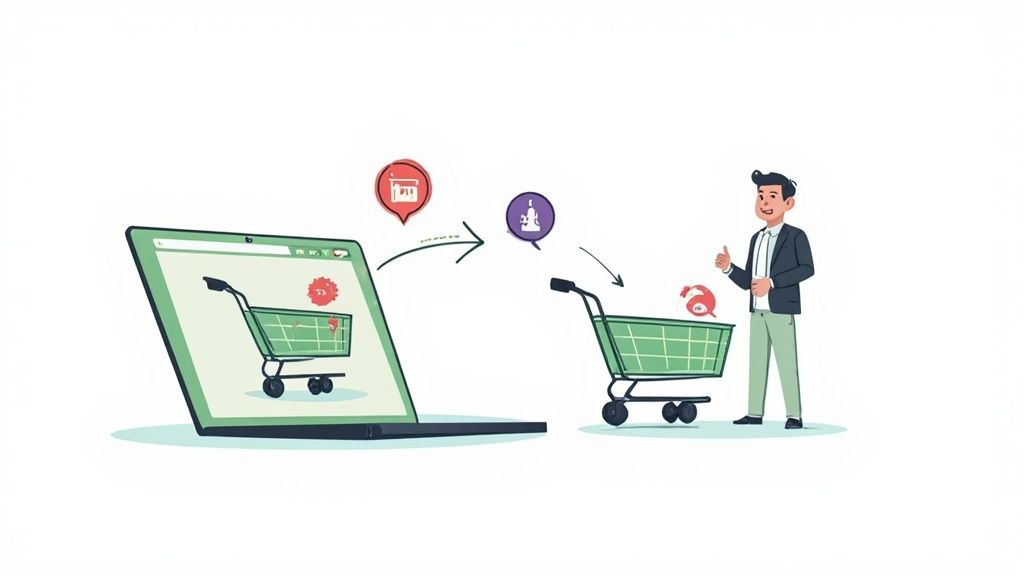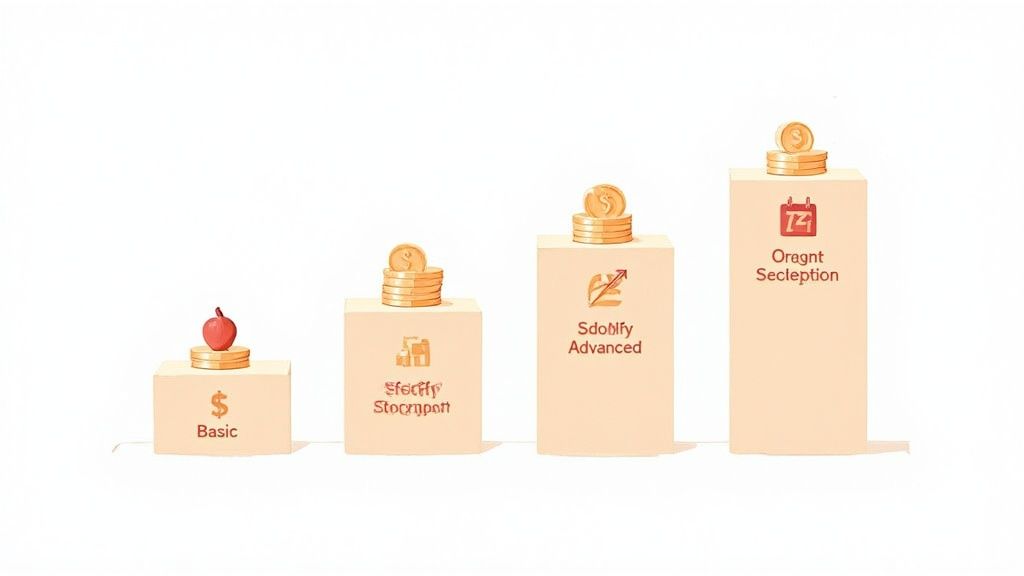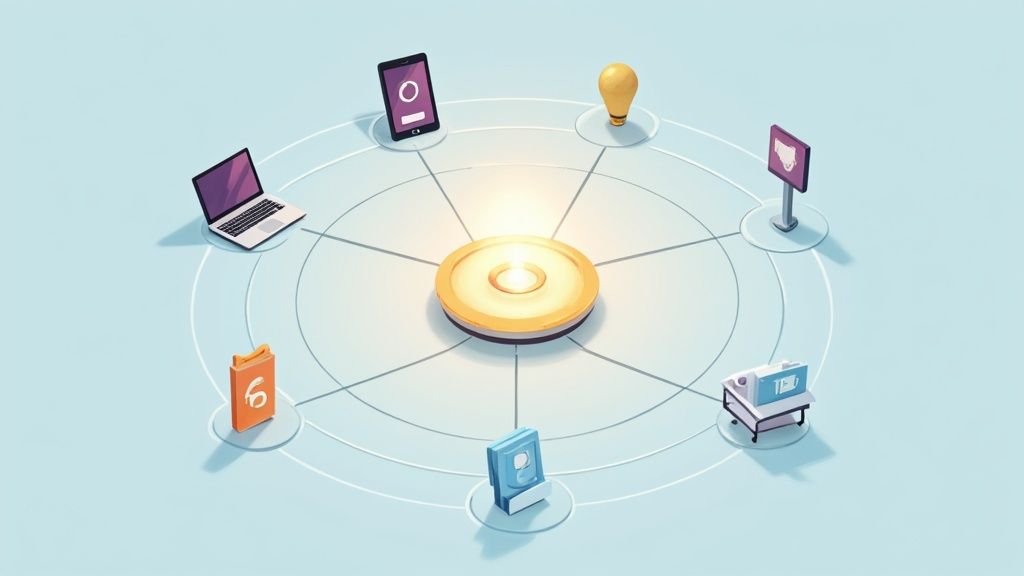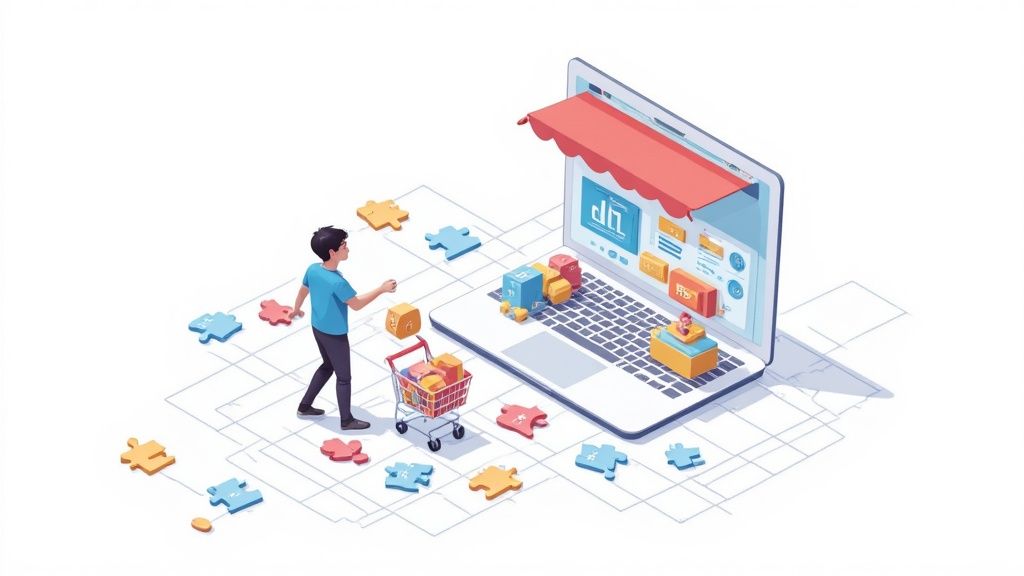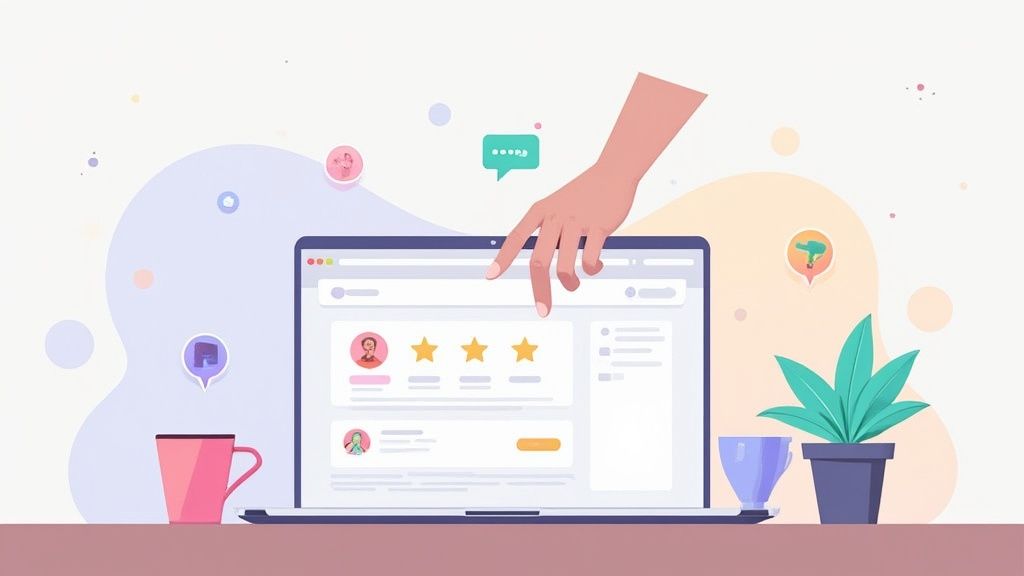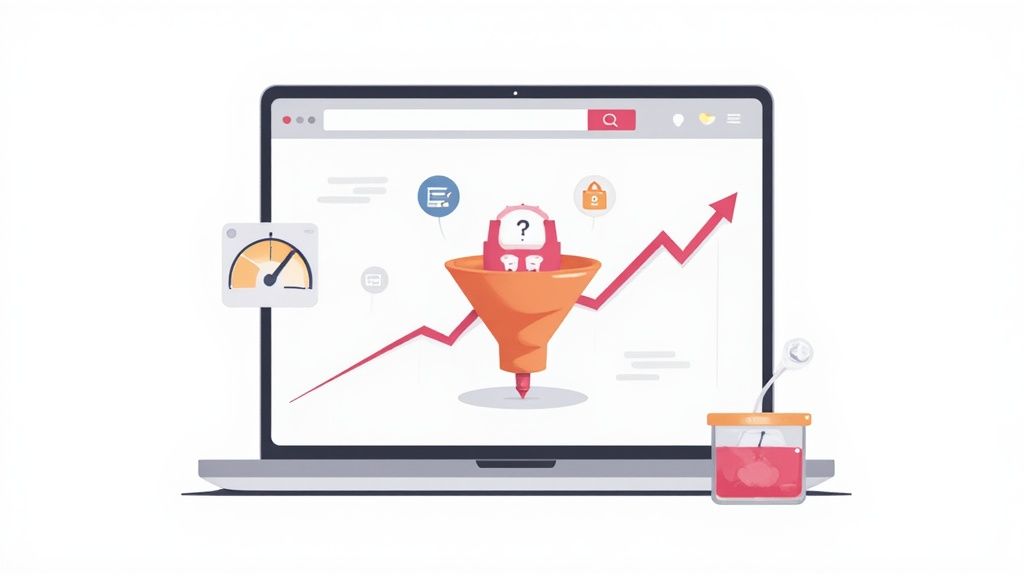
Let’s get one thing straight: nobody likes getting a customer complaint. It can feel like a personal jab at all the hard work you’ve poured into your business. But what if you started looking at each complaint not as a problem, but as a priceless piece of business intelligence?
Making that mental shift is the first step in turning a moment of friction into an opportunity for real growth. Handling complaints well is so much more than just nodding and saying "the customer is always right." It's a strategic move that directly shores up your brand's reputation and your bottom line.
Think about it. For every one customer who takes the time to complain, dozens more just walk away without saying a word. The ones who speak up are giving you a gift: a chance to fix what’s broken and win them back for good. Dropping the ball here has some pretty serious consequences.
The Real Cost of Fumbling Complaints
Mishandling or flat-out ignoring complaints isn't just bad service; it’s a direct hit to your revenue. The financial fallout is staggering—businesses in the US lose an estimated $75 billion a year because of poor customer service, and a huge chunk of that comes from unresolved issues.
Even more telling, studies show that 56% of customers have ditched a company after a bad service experience. A third of them will consider jumping ship after just one bad interaction. These aren't just stats on a page; they're real customers taking their money elsewhere. You can dig into more customer service statistics and their business impact to see the full picture.
The image below breaks down the key metrics that a solid complaint resolution process directly improves.
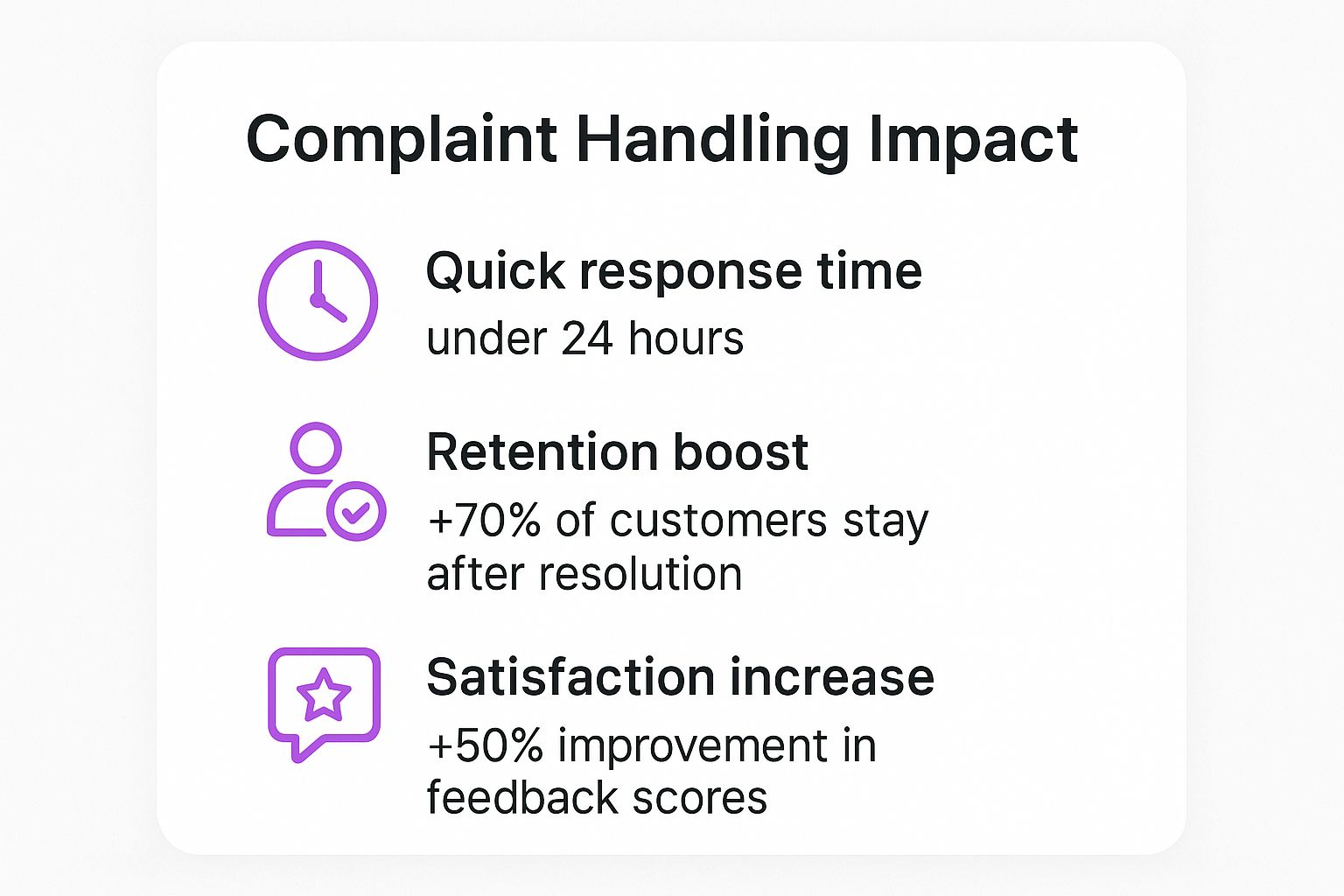
As you can see, the data is clear: getting to a quick and effective resolution gives a massive boost to customer retention and satisfaction scores.
A resolved complaint is one of the most powerful marketing tools you have. A customer who feels heard, understood, and respected is far more likely to become a loyal advocate than one who never had an issue to begin with.
This guide isn't about damage control. It’s about building a practical framework that not only solves the immediate problem but also helps you mine the gold hidden inside that customer feedback. Let’s build a system that creates loyalty and drives your business forward.
Here's a quick look at the core philosophy we'll be breaking down.
The Four Pillars of Effective Complaint Resolution
These four pillars form a simple but powerful foundation for turning negative experiences into positive outcomes.
The First Response: Mastering the Art of Active Listening

The first 60 seconds after a customer complains can make or break your entire relationship. It's a moment charged with emotion, and every word you choose carries a ton of weight. Before a customer is even remotely open to hearing a solution, they need to feel like you've actually heard them.
This goes beyond simple politeness; it's about the psychology of de-escalation. When someone is frustrated, their most immediate need is validation. If you jump straight into problem-solving mode—or worse, start defending the company—you’re immediately signaling that you're not on their side. Your first job is just to listen. Actively, and with genuine empathy.
Customer expectations are through the roof. Recent studies show that 78% of customer service representatives feel that customer demands have climbed significantly. The pressure is on, and a failure here can lead to a loyalty drop-off of about 12% among unhappy customers. A thoughtful, human-first response is your best defense. You can find more data on rising customer service expectations and their impact on loyalty at nextiva.com.
Channel-Specific Listening Tactics
Active listening isn't a one-size-fits-all skill. The goal is always the same—make the customer feel understood—but how you get there has to change with the medium.
- On the Phone: Use simple verbal cues like "I see," or "Tell me more about that." These show you're engaged without cutting them off. Resist the urge to interrupt, no matter what. The pauses and the tone of your voice can be just as powerful as your words.
- Via Live Chat: You need to be fast, but also clear. Use short, reassuring phrases like, "I'm looking into this for you right now," and "I understand why that’s frustrating." A well-placed emoji can sometimes convey empathy faster than words, but don't overdo it.
- Through Email: Email is tough because it lacks real-time feedback. Your language has to be incredibly precise and warm. Always start by explicitly acknowledging their problem: "Thank you for reaching out and detailing the issue with your recent order." It's a small thing, but it proves you actually read their message.
Phrases That De-escalate vs. Phrases That Aggravate
What you say right out of the gate is everything. Some phrases that sound reassuring on paper can actually pour gasoline on the fire because they invalidate how the customer feels.
Key Takeaway: Stop saying "Calm down" or "I understand how you feel." They almost always come across as condescending. Instead, use phrases that validate their specific emotion without claiming to share it. Try something like, "That sounds incredibly frustrating," or "I can see why you're upset about that."
Let’s walk through a real-world example. Imagine a customer, Mark, is furious because a critical software feature he relies on is bugging out after an update.
A Robotic, Scripted Response:
"We apologize for the inconvenience. Our technical team is aware of the issue and is working on a solution. Please check our status page for updates."
This reply is cold, impersonal, and totally dismissive. It offers zero empathy and shoves the burden of finding a resolution right back onto Mark.
An Authentic, Human-Centered Response:
"Hi Mark, thanks for reporting this. I can see how disruptive a bug in that feature would be to your workflow, and I'm genuinely sorry for the trouble it's causing. I'm looking at your account now and will personally follow up with an update within the hour."
See the difference? This response works because it acknowledges his specific pain point (a disrupted workflow), uses empathetic language ("I'm genuinely sorry"), and takes ownership of what happens next. It’s the difference between closing a ticket and actually saving a customer relationship. Get this first interaction right, and you set the stage for a positive outcome.
Finding the Right Solution, Not Just a Quick Fix

Alright, you've listened to the customer and made them feel heard. That's half the battle. Now comes the part where the rubber meets the road: actually solving their problem. The goal here isn't just to close another ticket. It's about finding a real, lasting solution that brings them back into the fold and restores their faith in your brand.
This means switching gears from simply reacting to proactively investigating what went wrong in the first place.
Here's where many businesses drop the ball. Nothing kills customer goodwill faster than hearing, "I'll have to ask my manager." When your team has the autonomy to fix issues on the first contact, it completely changes the game. In fact, research shows customers who get their complaints resolved in under five minutes are often willing to spend more with you down the line.
Empowering Your Team with a Solution Matrix
Giving your team total freedom can feel like a recipe for chaos, I get it. That's why you need a clear framework. A "Solution Matrix" is a brilliantly simple tool that guides your agents to the right call, quickly and consistently. It's all about balancing immediate customer happiness with what makes sense for the business.
Think of it less as a rigid script and more as a set of pre-approved guidelines for common complaint scenarios. It gives your team the authority to make decisions on the spot, outlining potential remedies based on the severity and type of issue.
Key Insight: A Solution Matrix gives your team the confidence to handle complaints consistently. It levels the playing field for both the customer and the business by defining clear, pre-approved actions for specific problems, from service credits to full refunds.
Let’s see what this looks like in practice for a typical eCommerce store.
Digging for the Root Cause
While the matrix tells your team what to do, the best support pros also need to understand why it happened. After offering a solution, a great agent will gently probe for a bit more context. This is how you learn to handle customer complaints better next time.
For that damaged product, was the packaging flimsy? For the billing dispute, was the pricing on the product page confusing? Asking these questions turns a single complaint into a goldmine of data.
Suddenly, your support team isn't just a cost center anymore. They're a vital source of business intelligence, flagging systemic issues before they blow up and affect hundreds of other customers. This is the difference between just patching a hole and actually strengthening the entire foundation of your customer experience.
Communicating the Resolution and Closing the Loop

You've done the hard work and figured out the perfect solution for your customer. That's a huge win, but the job isn't quite over yet. The fix you offer is only as good as how you communicate it.
Delivering the resolution with clarity, empathy, and confidence is what transforms a solved problem into a memorable, positive experience. This is the moment you solidify the customer's trust. A clunky, impersonal message can undo all your hard work. Keep it human.
Crafting a Clear and Empathetic Resolution Message
Your resolution message should feel less like a transaction and more like a real conversation. Start by briefly restating the problem—this shows you were actually listening. Then, clearly outline the steps you’ve taken to fix it.
For example, instead of a blunt "We've issued your refund," try a warmer approach. Something like, "I’ve gone ahead and processed a full refund for your original order. You should see it pop back into your account within 3-5 business days." That small touch makes a world of difference.
Key Insight: Never underestimate the power of a genuine apology. Research shows 45% of customers will forgive a company after receiving a sincere apology, compared to just 23% who are offered compensation alone. Owning the mistake is often more valuable than the fix itself.
Getting the language right is a core part of building loyalty. Here’s a quick look at how to rephrase common responses to be more effective.
Complaint Response Template Do's and Don'ts
Knowing what not to say is just as important as knowing what to say. This table breaks down a few common scenarios where a simple tweak in your language can completely change the customer's perception.
Simple shifts, right? But they change the entire tone from dismissive to collaborative, which is exactly what you want when you're trying to win back a customer's trust.
The Power of the Proactive Follow-Up
Most companies consider the case closed once the solution is delivered. This is a massive missed opportunity. The final—and arguably most crucial—step is to close the loop with a proactive follow-up.
This is what separates good service from great service.
A simple email or message a few days later asking, "Hi [Customer Name], just wanted to quickly check in and see if the new product is working well for you," is incredibly effective. It requires minimal effort but shows you genuinely care about the outcome, not just about closing a ticket.
This final touch accomplishes three key things:
- Confirms the solution worked. It catches any lingering issues before they fester into another complaint.
- Reinforces your commitment. You're proving you’re invested in their satisfaction beyond just the initial problem.
- Turns customers into advocates. This small gesture often surprises and delights customers, turning a frustrating experience into a reason to recommend your brand.
By thoughtfully communicating the resolution and following up, you don't just solve a problem—you strengthen a relationship. You prove that even when things go wrong, your company can be trusted to make it right.
Turning Complaints Into Actionable Business Insights
Resolving a customer's issue is a win, but it's only half the story. The real gold is buried in the feedback itself. When you learn to transform a simple list of problems into a powerful source of business intelligence, you stop reacting to individual issues and start proactively building a better business.
Think of each complaint as a data point—a little red flag highlighting a friction spot in your customer journey. Once you start tracking and analyzing these signals, you're no longer just putting out fires; you're fireproofing your entire operation. This is how your support department goes from being a cost center to a strategic engine for growth.
From Simple Tracking To Deep Insights
You don’t need a fancy system to get started. If you're running a newer eCommerce store, a shared spreadsheet can be surprisingly effective. Just create columns for the customer's name, the date, the complaint category (like Shipping, Product Quality, or Sizing), and how it was resolved.
As you grow, you can manage this data in a more robust CRM, but the core principle never changes: you're looking for patterns.
- Are multiple customers complaining about damaged packaging? It’s probably time to rethink your shipping materials.
- Is there a spike in questions about a specific feature? Your product descriptions or user guides might need a rewrite.
- Do billing errors seem to pop up at the end of every month? You could have a flaw in your payment processing workflow.
This systematic approach gives you clear, data-backed priorities for improvement. By digging down to the root cause, you not only prevent future complaints but also elevate the entire customer experience—which is the bedrock of brand loyalty. You can dive deeper into this in our guide on proven eCommerce customer retention strategies.
Case Study in Action: An online furniture brand noticed a recurring complaint: customers found the assembly instructions for a popular bookshelf confusing. Instead of just apologizing to each person, they analyzed the feedback. They realized the diagrams were the problem and created a simple, step-by-step video tutorial. They then emailed the video to everyone who had ever bought the bookshelf and added a QR code to the instructions in new shipments. The result? A 40% reduction in support tickets for that product and a wave of positive reviews praising their proactive support.
Balancing Technology With The Human Touch
As you scale, technology is a lifesaver for managing complaint data. But it's critical to strike the right balance.
While automation can make things more efficient, a whopping 75% of customers still want to talk to a real person when they have a problem. This creates a serious challenge, as only 25% of call centers have successfully integrated AI automation, leaving a major gap. Delays are expensive; long wait times, for example, cause 21% of pharmacy patients to take their business elsewhere. And while the complaint management software market is set to quadruple to over $8 billion by 2026, the human element is truly irreplaceable. You can find more stats on the blend of tech and touch in complaint management at llcbuddy.com.
Common Complaint Scenarios and How to Navigate Them
Theory is great, but the real test comes when you're face-to-face (or screen-to-screen) with an unhappy customer. Knowing how to handle these moments can make all the difference.
Let's walk through some of the most common—and often tricky—situations your eCommerce team will encounter and break down exactly how to handle them with confidence.
The Angry Customer with Aggressive Language
When a customer is genuinely furious, it's incredibly easy for the conversation to spiral out of control. The absolute key here is to remain calm and professional. You can't mirror their tone. Your first goal is always de-escalation, not winning an argument.
Start by acknowledging their frustration right away. Use firm but empathetic language. Something like, “I can hear how upsetting this is, and I'm here to help you get this sorted out,” shows you're listening and moves the conversation toward a solution.
But what if the language becomes abusive? You have to set a boundary.
It is 100% acceptable to say, "I am fully committed to fixing this for you, but I cannot continue the conversation if the abusive language persists." This protects your team while keeping the door open for a productive outcome.
The Request for Compensation
This is a classic dilemma: when do you offer a refund, a discount, or store credit? A good rule of thumb is to consider compensation whenever your company is clearly at fault or when the negative experience has caused a major inconvenience.
The compensation should always match the scale of the problem.
- Minor Issues: For small hiccups—a slightly delayed shipment or a typo in an email—a sincere apology and a quick fix are often more than enough.
- Major Failures: If a product is defective or a delivery for a critical event (like a birthday) is missed, a more substantial remedy is needed. Think full refund, a free replacement, or a significant discount to restore their faith.
The best thing you can do is empower your team with clear guidelines. When they can make these decisions confidently without escalating every single request, everyone wins.
The Vague or Unclear Complaint
Sometimes, a customer is frustrated but can't quite put their finger on why. You'll get tickets that just say, "it's not working" or "I'm unhappy with the quality." Your job in these moments is to become a bit of a detective.
Resist the urge to guess. Instead, ask clarifying, open-ended questions to get to the heart of the matter.
- "Could you walk me through the steps you took?"
- "What part of the product didn't meet your expectations?"
- "Can you tell me a bit more about what you were hoping for?"
This approach does more than just help you diagnose the problem. It shows the customer you're genuinely invested in understanding their specific issue, not just closing another ticket. It’s a crucial step to ensure the solution you offer actually solves their problem.
At ECORN, we help brands build seamless customer experiences that turn potential problems into opportunities for loyalty. From optimizing your Shopify store to streamlining your support processes, our team provides the expertise to help you scale efficiently. Discover how our flexible solutions can support your growth.








